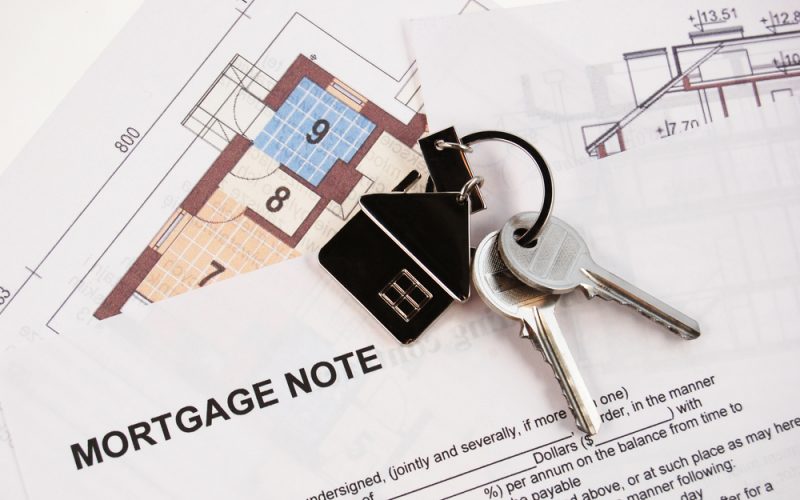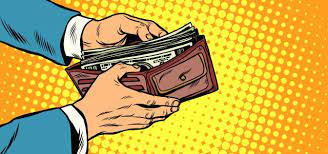A mortgage is a loan gotten from a bank or other financial institution that assists the borrower in purchasing a home. We can also refer to it as a contract.
The collateral for a mortgage is the home. This implies that if the borrower cannot pay off the loan, he or she will unload the house to recover the cash.
It’s a perfect way to invest in property without plenty of your time and energy.
A mortgage note is that the document that you just sign at the end of your home closing. It encloses all the terms of the agreement between the borrower and the lender and accurately reflects all the terms of the mortgage. It also states how the borrower will repay the loan, with the home as collateral.
In this article, we will explain what a mortgage note is, samples of mortgage notes, the ways to buy a mortgage note, and a vivid description of what a mortgage note looks like.
READ ALSO: Mortgage: Simple 2023 Guide for Beginners and all you need Updated!!!
What is a Mortgage Note?
When an emptor or investor wants to shop for a house but isn’t ready to pay at closing, they get a loan. They pay a part of the acquisition price as a deposit and borrow the remaining amount from a bank or financial organization.
In exchange for the money, the lender has them sign a document, which is called a Promissory Note.
A debt instrument, often just called a promissory note, is signed by the borrower and could be a promise to repay a debt.
A promissory note provides the financial details of the loan’s repayment, like the rate and method of payment.
It also outlines who borrowed money from whom, what proportion was borrowed, the rate of interest of the loan, the timeline for loan repayment, and what happens within the event of default.
However, mortgage notes are another asset class within active property investing. They encompass numerous benefits and present unique opportunities. They also earn higher-than-average returns for realty investments.
For example, if your lender attempts to alter your loan terms or charge you additional fees, he or she reviews your Mortgage Note to know what’s permitted.
The note is that document that determines how your loan works and if your mortgage terms can change. Because it’s such a very important document, we recommend that you simply keep your Mortgage Note in a safe place that’s easily accessible.
READ ALSO: Deed Of Trust: Overview, Mortgage vs. Deed of Trust & How it Works
How does a Mortgage Note Work?
A promissory note and a mortgage note does different jobs, but they’re going hand-in-hand. you’d never create or buy a promissory note without a mortgage and vice versa.
Therefore, it’s essential to make sure that your mortgage note and all other legal documents involved in your home buying process are completely accurate.
You and a lawyer should read through the mortgage note to ensure the terms are correct which all agreements are included.
In addition, a mortgage note could be a security instrument, it is often bought and sold on a secondary market.
Therefore, lenders sometimes sell mortgage notes to realty investors who are drawn to these relatively risk-free investments. Because lending institutions sell mortgage notes, land investors technically own a mortgaged property.
These investments are low risk because the sole way investors will lose money is if a borrower defaults on their loan or avoids paying interest by prepaying their mortgage. Even within the latter situation, they’ll not lose money, but also won’t earn much money because they aren’t earning interest.
Regardless of who holds the mortgage note, the borrower must follow the terms of the mortgage. The borrower won’t be laid low with any change in who holds the note because they will consistently make the payments to a third-party entity throughout the lifetime of their loan.
The borrower won’t have the first copy of their mortgage note until they need to pay off their loan. At closing, the borrower will receive a replica of the mortgage note.
This is a part of the legal process and helps the borrower to grasp what their responsibility is in return for a loan. Once they need to pay off the whole thing of the loan, they’ll receive the deed to their home.
Examples of a Mortgage Note
There are several examples of mortgage notes, and they include: –
Secured: If a loan is secured, it means that there is a tangible asset tied to the loan — within the case of a mortgage, this asset is property.
Unsecured: If the loan is unsecured, there’s nothing collateralizing the loan. Simply, there’s no collateral posted. These notes typically come at a less expensive price (higher yield) because of the upper inherent risk.
Institutional loan: An institutional loan means a bank or financial organization created the mortgage note. These loans have strict laws and guidelines for underwriting.
Private loan: A non-public loan means a non-public individual created the mortgage note. This might be a friend, friend, colleague, private lender, or maybe the vendor of the house.
Sometimes, if the vendor owns the property free (with no mortgage), they’ll create and hold a mortgage for the customer. They call these seller carryback loans, seller-financed loans, or owner-financed loans.
A private loan still encompasses a note and mortgage, but the underwriting process isn’t as heavily regulated. The language that goes into the documents is up to the lender. Some use attorneys or title companies to form the documents, while others don’t.
READ MORE: Mortgage Brokers: How do Mortgage Brokers Make Money in the US (Updated)
Buying a Mortgage Note
Once you’re conscious of how a mortgage note works, you may have to learn the way to shop for a mortgage note from the bank.
Follow this process below to buy a mortgage note
1. Determine your objective
Before approaching a bank, you must have a true estate investment plan already in situ. First, you will have to consider your risk tolerance and whether you propose flipping or holding onto the mortgage note.
If you’re trying to find a gradual payment stream that gives high-income certainty, then you may likely hunt for stable and low-risk mortgage notes.
If your goal is to create an enormous splash via a one-time trade and have the mandatory risk appetite, you might consider a high-risk note trading at a major discount.
2. Find a note to shop for
Two major drawbacks of exploring the secondary marketplace for private sellers are the pricing inefficiencies and lack of regulation.
These factors often create a seller’s market. Even the foremost experienced note brokers can spend countless hours searching online sites for attractive deals from private sellers. This is where banks come in handy.
The number of perceived “bad debt” that they hold on their books often hamstrings banks’ lending capacities. If they require to issue more mortgages, a technique to extend capacity is to unload mortgage notes.
However, bear in mind that while a bank views mortgage notes as a risky asset, it doesn’t mean the borrower has stopped making repayments.
The actual risk profile might require such a designation independent of the borrower’s performance. Either way, banks often view selling the debt as an appropriate business decision, and this creates more favorable secondary market opportunities for note purchasers.
READ MORE: Secondary Mortgage Market: Step By Step Guide On How It Works
3. Review the “tape.”
A mortgage note “tape” may be a datasheet that discloses several data necessary to gauge the mortgage note’s investment value. The tape should be one of the primary resources employed in the decision-making process.
4. Avoid customer service if possible
You can save yourself time (and headaches) if you’ll position yourself directly before the bank’s decision-makers.
As is that the case with any products or services company, there’ll be barriers to entry for a replacement customer.
Not everyone who walks through the door picks up the phone or, submits a web appointment request is that curious about purchasing something.
That’s why companies have a customer service process in situ — to order a decision maker’s time for those looking to conduct actual business.
That is the advantage of getting a true estate investment plan. the corporate knows you’re serious, and the decision-maker knows you may not be wasting their time.
5. Determine your terms.
Both bid and offer prices can show inconsistencies, and therefore the final price is commonly subjective.
There are aim factors to include in a price calculation. They will include (but don’t seem to be limited to) the borrower’s credit score, the borrower’s performance, the remaining number of payments, the loan’s rate, the loan type, and also the loan’s final maturity (when the loan is repaid in full).
READ MORE: Mortgage Underwriter: Process, Salary, Jobs & How To Become a M.U Guide.
What does a Mortgage Note Look Like?
Mortgage notes are usually titled as a note, borrower’s note, or mortgage note. Document titles will facilitate your differentiation between your mortgage note and other loan forms, like the closing disclosure or loan estimate.
According to the buyer Finance Protection Bureau, mortgage notes include the quantity you owe, the charge per unit, the payment due dates, the length of your time for repayment, and where the payments are to be sent.
The note also contains a piece outlining any consequences, should the terms of the note be broken.
READ MORE: Alternative Investments: Beginners Guide to the Investment Options
What Is Another Name for a Mortgage Note?
Written contracts known as promissory notes, usually referred to as mortgage notes, are made by two parties who promise to pay each other a specific sum of money at a later time. Usually, during the mortgage procedure, both banks and borrowers concur on these notes.
What Does a Note Do in Mortgage?
An official document known as a mortgage note outlines all the conditions of the mortgage between a borrower and their lending institution. The entire amount of the mortgage loan, for example, is one of the terms included. how much the deposit will be.
What Is the Difference Between a Note and Mortgage?
a mortgage versus a promissory note. An independent agreement from the mortgage, a promissory note is a written agreement between a lender and borrower in which the borrower makes a promise to pay the lender. An duty to return money is “secured” by a mortgage, which is a legal document that links real estate to that commitment.
What Does It Mean to Buy a Mortgage Note?
Buying an existing mortgage from a lender, along with the debt and note securing it, is known as buying a mortgage note. The investor can then begin collecting monthly payments from the borrower as the new lender. In the event that the borrower defaults on their payments, they also have the option of foreclosing on the property.
Who Has Mortgage Noted?
The company that lent you the money is referred to as the “lender”. The term “lender,” “holder,” or “note holder” alludes to the party that owns the loan. Later, the lender can sell the mortgage debt to another party, which would then become the new loan owner (holder).
Why Is a Loan Called a Note?
A note, usually referred to as a promissory note, is a formal debt instrument in which one party promises in writing to pay a specific sum of money to another party in accordance with specific conditions.
Can I Buy a Mortgage Note From a Bank?
Buying Pre-Existing Notes – On the secondary mortgage market, both performing and non-performing notes are currently up for sale. There are numerous methods and resources for purchasing notes, including contacting banks, establishing connections with brokers and hedge funds, and assembling your own network of private sellers.
Is Mortgage Note Same as a Deed of Trust?
When buying or selling real estate, a deed of trust, a type of legal document like a mortgage, is utilized. In contrast to a mortgage, which solely involves the lender and the borrower, a deed of trust also includes a neutral third party that has ownership rights over the real estate up until the loan is repaid or the borrower defaults.
Conclusion
Buying a home will probably be your most vital asset. So, always ensure to secure important documents after closing any deal.
I hope this article helps you to understand what a mortgage note is all about. If you have any questions or suggestions, kindly let me know in the comments section.
Good luck!
Recommendation
- Best mortgage lenders: 2023 picks updated (+ detailed guide)
- Real Estate Industry: Overview, Types & Examples
- NFL Pension: The Ultimate Guide in 2023 (Updated)
- Guarantor: Definition, Meaning & Insurance
- Land Lease: All you need to Know in 2023 (Updated)
Reference






